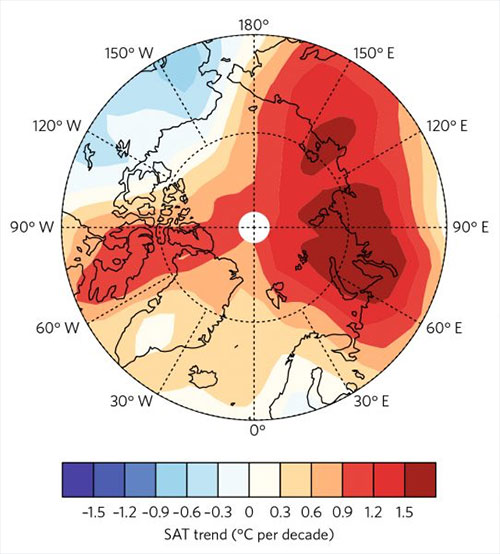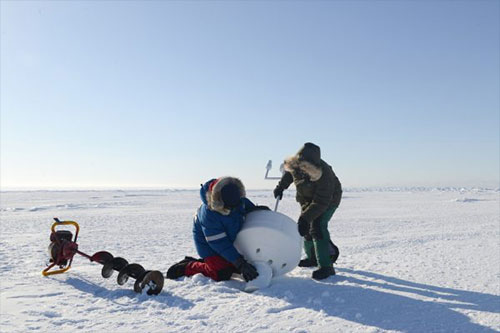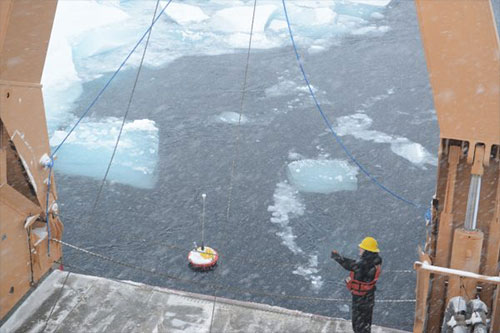
Study: Added Arctic data show warming didn’t pauseBy MEGHAN MURPHY
November 21, 2017
A University of Alaska Fairbanks professor and his colleagues in China built the first data set of surface temperatures from across the world that significantly improves representation of the Arctic during the “global warming hiatus.”
Xiangdong Zhang, an atmospheric scientist with UAF’s International Arctic Research Center, said he collaborated with colleagues at Tsinghua University in Beijing and Chinese agencies studying Arctic warming to analyze temperature data collected from buoys drifting in the Arctic Ocean. “We recalculated the average global temperatures from 1998-2012 and found that the rate of global warming had continued to rise at 0.112C per decade instead of slowing down to 0.05C per decade as previously thought,” said Zhang, who is also a professor with UAF’s College of Natural Science and Mathematics. Zhang said their new estimates showed that the Arctic warmed more than six times the global average during that time period. The team developed new methods of incorporating the Arctic temperature data into global temperature data to better estimate the average temperatures.
Most current estimates use global data that tend to represent a long time span and provide good coverage of a global geographic area. But the remote Arctic lacks a robust network of instruments to collect temperature data. To improve the dataset in time and space, the team relied on temperature data collected from the International Arctic Buoy Program at the University of Washington. For global data, the team used newly corrected sea surface temperatures from the National Oceanic and Atmospheric Administration. Zhang said this study expands on NOAA research and other recent studies that have either supported or refuted the idea of a “global warming hiatus” by re-estimating the average global temperatures during that time period with more accurate and representative data. The global warming hiatus is a much-debated topic among climate researchers. Some scientists theorized that an unusually warm El Niño in the years 1997-1998 and an extended period afterward without an El Niño in the tropical Pacific Ocean may have disrupted the rate of global warming. The Earth’s average global temperatures have been rising over the past century and accelerating as more human produced carbon dioxide enters and lingers in the atmosphere, which is why the idea of “global warming hiatus” seemed baffling to some scientists.
But the new data set and resulting estimates show conclusively that the warming didn’t pause. It also highlights the importance of considering the Arctic when thinking about climate change. Until recently, Zhang said, many scientists didn’t consider the Arctic big enough to greatly influence the average global temperatures. “The Arctic is remote only in terms of physical distance,” he said. “In terms of science, it’s close to every one of us. It’s a necessary part of the equation and the answer affects us all.” The National Science Foundation, the State Key Development Program for Basic Research of China, the Tsinghua University Initiative Scientific Research Program and the China Meteorological Administration Special Public Welfare Research Fund supported this research.
Representations of fact and opinions in comments posted are solely those of the individual posters and do not represent the opinions of Sitnews.
|
||||||


